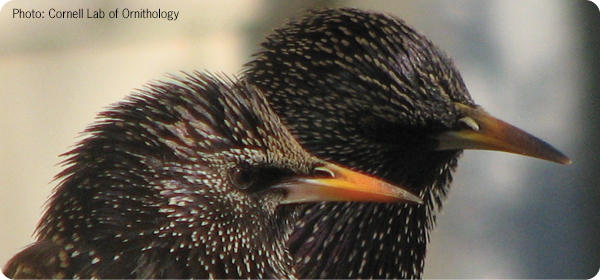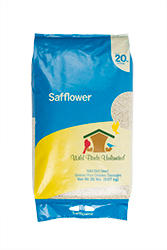
Dealing With Starlings
What's up with all these black birds taking over your feeders? More than likely, it's the European Starling that's been dominating your feeders these days! However, there are several solutions to keep these birds from monopolizing feeders.
- Fill your feeders with just enough fresh food in the morning and then in the evening to be sure your "favorite" birds eat it before the starlings find it.
- Offer your favorite WBU seed blends in tube feeder as opposed to a hopper feeder. This will help diminish the amount of seed that the starlings tend to throw to the ground.
- Safflower. It's a small, white seed that is high in protein and fat. Many of your favorite birds will readily eat safflower; starlings typically do not because the very hard shell is difficult to open.
- Offer WBU Simply Suet, which the starlings don't seem to like. Don't worry, this won't prevent your woodpeckers and favorite birds from visiting.
- Try feeding Peanuts in the Shell to help attract jays, titmice, chickadees, nuthatches and woodpeckers. Starlings don't seem to bother with these much.
- Continue to feed Nyjer® (thistle) to your goldfinches. Starlings don't seem to care much for this seed. Also, you might be surprised to see a few other visitors to your finch feeder; such as chickadees and nuthatches.
- Add WBU On-Guard Cages to your feeders. They allow smaller birds through while keeping out larger birds.

The Safflower Solution
Sunflower-eating birds love Safflower; squirrels and blackbirds typically don’t.
If you are looking to be more exclusive with your bird feeding, Safflower may be the solution for you. Many of your favorite birds will enjoy safflower, yet blackbirds, grackles and squirrels typically don't. Safflower can be offered in hopper, platform or tube feeders, and it is especially helpful for window or deck feeders where blackbirds or squirrels may be a problem. Offer safflower gradually, mixing it with the seed blends you currently provide, and over time, you'll end up with a dining spot for all kinds of birds, including House Finches, woodpeckers, nuthatches and chickadees.
Attract Birds with Shelled Peanuts
Peanuts are the best single source of protein and fat for your birds and a great addition to the choices you offer in your yard.
Peanuts are a high-energy food, and a wide variety of birds really enjoy them. Birds such as woodpeckers, titmice, nuthatches, chickadees, jays and more will frequent peanut feeders. Many of their visits will be to carry peanuts off and cache them for a later meal. We offer a variety of bird feeders that allow the birds to pull the peanuts from the feeder, and they can cling anywhere they want.
Feed Suet All Year Long
Suet is a high-energy, pure-fat substance that supplements birds’ daily diet year-round and is particularly helpful when finding insects to eat is difficult. All of our suets and no-melt suets contain high-quality ingredients, providing critical fats and calories and making every trip to the feeder count. Also, WBU suet is rendered to help remove some of the impurities that can cause spoilage.
Suet allows you to feed the birds year round. Offer No-Melt Suet when seasonal temperatures are above 95º F and Suet when temperatures are below 95ºF. No-Melt Suet is designed to withstand temperatures up to 130° F.
Offering suet at a backyard feeding station is one way to attract a greater diversity of insect-eating birds. Birds that eat suet will still find natural food sources, such as insects, insect eggs and larvae for a well-rounded diet. Birds that eat both insects and seeds, like chickadees and nuthatches, will also visit suet feeders.

